Faculty
The collective expertise of the members of the Department of Biological Sciences covers a broad swath of classical and modern biology. From molecules to microbes and organisms to ecosystems, the faculty bring our love of all aspects of the life sciences to our classes and laboratories. We strive to ensure that our students have an understanding and appreciation of all of the levels of living systems.
Our Biology curriculum emphasizes this approach, with courses in introductory biology, genetics, organismal biology, and cell biology required of all majors. Juniors and seniors also participate in a capstone seminar course focused on researching and communication. Just as our discipline is one examining the dynamic nature of the living world, we are constantly examining our courses and curriculum for ways to improve them in order to better help our students learn as much as they can.
Student research is a key part of the faculty's mission as educators and scientists. We support students conducting research not only in our course laboratories but also working with individual faculty mentors one-on-one in independent study projects and Honors thesis research. Since the University's senior Honors program began in 1960, the Department of Biological Sciences has had more than 100 students graduate with Honors — more than any other department at Moravian.
Biology Faculty
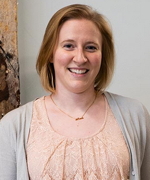
Kara Mosovsky | Associate Professor and Chair of Biological Sciences
Office location: Collier 311
Lab location: Sally 317
Office phone: 610-861-1428
Email: mosovskyk@moravian.edu
Education
B.S. in Animal Bioscience, The Pennsylvania State University
M.S. in Immunology and Infectious Disease, The Pennsylvania State University
Ph.D. in Microbiology, Colorado State University
Research Interests
Dr. Mosovsky studies host-pathogen interactions, particularly those between bacterial pathogens and mammalian hosts. Her research and interests include antibiotic resistance, intracellular infections, and infectious disease.
Kara Mosovsky's Selected Publications
Pomposello M, Nemes K, Mosovsky K (2020). "Dietary Antioxidant Seleno-L-Methionine Protects Macrophages During Infection with Burkholderia thailandensis". PLoSONE 15(9): e0238174. (Moravian student authors in italics)
Mosovsky K (2019). "The Use of a Fast-Paced, Competitive Drawing Game as a Student-Approved Review Strategy for Microbiology." Journal of Microbiology and Biology Education 19(3): 19.3.107.
Mosovsky K (2019). "Time to Branch Out." Science 364(6444): 1002.
Collins, C, Mosovsky K (2018). "Antibiotic Tolerance: Distinguishing between Classical Resistance and Persistence in a Macrophage Infection Model." Fine Focus, 4(1): 117-129. (Moravian student author in italics)
Mosovsky K, Silva E, Troyer R, Propst-Graham K, Dow S (2014). Interaction of IFN-γ Induced Reactive Oxygen Species with Ceftazidime Leads to Synergistic Killing of Intracellular Burkholderia". Antimicrobial Agents and Chemotherapy 58(10): 5954-63.
Chen Q, Mosovsky KL, Ross AC (2013). "Retinoic acid and α-galactosylceramide regulate the expression of costimulatory receptors and transcription factors responsible for B cell activation and differentiation." Immunobiology 218(12): 1477–1487.
Chen Q, Mosovsky KL, Ross AC (2011). "Retinoic acid and α-galactosylceramide differentially regulate B cell activation in vitro and augment antibody production in vivo." Clinical Vaccine Immunology 18(6): 1015-20.

Andrea Bortz | Lecturer
Office location: PPHAC 219
Office phone: 610-861-1434
Email: bortza@moravian.edu
Education
B.S. in Secondary Education (Biology), Bloomsburg University
M.Ed. in Education in Biology, DeSales University
Research Interests
I teach Anatomy & Physiology to nursing and health science students. I am pursuing a Ph.D. at Texas Tech University in the Department of Education, with a specialty in STEM Education. My research interests include best practices to encourage the development of STEM identity in adolescents, in part through outreach, immersion and mentoring of secondary students in populations underrepresented in STEM.

Cecilia M. Fox | Professor of Biological Sciences, Director of the Neuroscience Program and Health Professions Advisor
Office location: PPHAC 216
Lab location: Collier 310
Office phone: 610-861-1426
Email: foxc@moravian.edu
Website: moravian.edu/neuroscience
Education
B.S. in Biology, Manhattan College
Ph.D. in Neurobiology and Anatomy, University of Kentucky
Research Interests
My research focuses on the neuroprotection of the nigrostriatal pathway in a rodent model of Parkinson's disease. My undergraduates and I examine the efficacy of antioxidants and anti-inflammatories such as curcumin, selenium, and capsaicin in protecting dopamine neurons of the midbrain from the degeneration typically observed in this lesion model.
Cecilia Fox's Selected Publications
Kanakamedala L, Lopez de Boer, R and Fox CM, The neuroprotective potential of curcumin in the 6-hydroxydopamine rat model of Parkinson’s disease. In preparation
Halasz S, Stowell R and Fox CM. DNSP-11 is protective in the MPP+ and TaClo models of Parkinson’s disease. In preparation
Fox CM. 2019 Bridging the Generational Divide: Using Age as a Central Lens for Neuroscience Research and Service Learning. Faculty for Undergraduate Neuroscience Newsletter. October 2019 Issue.
Fox CM. 2017 (March). Why funding for scientific research matters. (Editorial) Morning Call.
Fox CM. 2017. Teaching neuroscience with a liberal arts edge. Neuronline, Society for Neuroscience Publishers
Fox CM. 2016. Brain Awareness Outreach: A Liberal Arts Perspective. Faculty for Undergraduate Neuroscience Newsletter. May 2016 Issue.
Fox CM. 2015. Developing the next generation of civic-minded neuroscience scholars: incorporating service-learning and advocacy throughout a neuroscience program. Journal of Neuroscience Education. Issue 1, Vol.14.
Fox CM. 2014. Engaging neuroscience undergraduates in advocacy. Faculty for Undergraduate Neuroscience Quarterly. Issue 2, Vol.2.
Fox CM. 2010. Cow brains and sheep brains and rat brains, oh my! Using service-learning to educate the public about the benefits of animal research. Research Saves, Issue 2(10), 24-25.
Fox CM. 2007. Brain Awareness Day: Integrating service with classroom instruction in neuroscience. Journal of College Science Teaching, Vol. 37(2), 40-45.
Mueller S, Drost M and Fox CM. 2007. Dietary and intraperitoneal administration of selenium provide comparable protection in the 6-hydroxydopamine lesion rat model of Parkinson’s disease International Undergraduate Journal for Neuroscience, 2, 1-10.
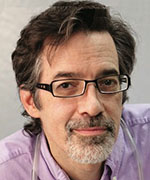
Christopher Jones | Professor
Office location: Collier 306
Lab location: Collier 227
Office phone: 610-861-1614
Email: jonesc@moravian.edu
Website: http://home.moravian.edu/users/bio/mecjj01/
Education
B.A. in Biology and Russian, Haverford College
M.Phil. in Molecular Biophysics & Biochemistry, Yale University
Ph.D. in Molecular Biophysics & Biochemistry, Yale University
Research Interests
I'm interested in many aspects of molecular genetics, but my research focuses primarily on the genetics of behavior in the fruit fly Drosophila melanogaster, especially learning and memory as well as seizure disorders.
Christopher Jones's Selected Publications
Lopatto, David, ... Christopher J. Jones, ... and Sarah C.R. Elgin. 2020. "Facilitating Growth through Frustration: Using Genomics Research in a Course-Based Undergraduate Research Experience." Journal of Microbiology and Biology Education 21(1):doi:10.1128/jmbe.v21i1.2005.
Leung, W., ... Christopher J. Jones, Stephanie L. Christ, Sami Mamari, Adam S. Rinaldi, Ghazal Stity, ... and Sarah C.R. Elgin. 2017. "Retrotransposons are the Major Contributors to the Expansion of the Drosophila ananassae Muller F Element." G3: Genes|Genomes|Genetics 7(8):2439–2460. (Moravian student authors in italics)
Laakso, M.M., L.V. Paliulis, P. Croonquist, B. Derr, E. Gracheva, C. Hauser, C. Howell, C.J. Jones, J.D. Kagey, J. Kennell, S.C. Silver Key, H. Mistry, S. Robic, J. Sanford, M. Santisteban, C. Small, R. Spokony, J. Stamm, M. Van Stry, W. Leung, and S.C.R. Elgin. 2017. "An undergraduate bioinformatics curriculum that teaches eukaryotic gene structure." CourseSource 4:1–9.
Elgin, S.C.R.E., C. Hauser, T.M. Holzen, C. Jones, A. Kleinschmit, J. Leatherman, and The Genomics Education Partnership. 2016. "The GEP: Crowd-Sourcing Big Data Analysis with Undergraduates." Trends in Genetics 33(2):81–85.
Leung, W., … C.J. Jones, T. Aronhalt, J.M. Bellush, C. Burke, S. DeFazio, B.R. Does, T.D. Johnson, N. Keysock, N.H. Knudsen, J. Messler, K. Myirski, J.L. Rekai, R.M. Rempe, M.S. Salgado, E. Stagaard, J.R. Starcher, A.W. Waggoner, A.K. Yemelyanova, … and S.C.R. Elgin. 2015. "Drosophila Muller F Elements Maintain a Distinct Set of Genomic Properties over 40 Million Years of Evolution." G3: Genes|Genomes|Genetics 5(5):719–740. (Moravian student authors in italics)
Shaffer, C.D., C.J. Alvarez, ... C.J. Jones, ... and S.C.R. Elgin. 2014. "A Course-Based Research Experience: How Benefits Change with Increased Investment in Instructional Time." CBE—Life Sciences Education 13(1):111–130.
Lopatto D., C. Alvarez, D. Barnard, C. Chandrasekaran, H.-M. Chung, C. Du, T. Eckdahl, A.L. Goodman, C. Hauser, C.J. Jones, O.R. Kopp, G.A. Kuleck, G. McNeil, R. Morris, J.L. Myka, A. Nagengast, P.J. Overvoorde, J.L. Poet, K. Reed, G. Regisford, D. Revie, A. Rosenwald, K. Saville, M. Shaw, G.R. Skuse, C. Smith, M. Smith, M. Spratt, J. Stamm, J.S. Thompson, B.A. Wilson, C. Witkowski, J. Youngblom, W. Leung, C.D. Shaffer, J. Buhler, E. Mardis, and S.C.R. Elgin. 2008. "Genomics Education Partnership." Science 322(5902):684–685.
Joiner, M.A., Z. Asztalos, C.J. Jones, T. Tully, and C.-F. Wu. 2007. "Effects of Mutant Drosophila K+ Channel Subunits on Habituation of the Olfactory Jump Response." Journal of Neurogenetics 21(1):45–58.
Nowotny, P., S.M. Gorski, S.W. Han, K. Philips, W.J. Ray, V. Nowotny, C.J. Jones, R.F. Clark, R.L. Cagan, and A.M. Goate. 2000. "Posttranslational Modification and Plasma Membrane Localization of the Drosophila melanogaster Presenilin." Molecular and Cellular Neuroscience 15(1):88–98.
Pinto S., D.G. Quintana, P. Smith, R.M. Mihalek, Z.H. Hou, S. Boynton, C.J. Jones, M. Hendricks, K. Velinzon, J.A. Wohlschlegel, R.J. Austin, W.S. Lane, T. Tully, and A. Dutta. 1999. "latheo encodes a subunit of the origin recognition complex and disrupts neuronal proliferation and adult olfactory memory when mutant." Neuron 23(1):45–54.
Mihalek, R.*, C.J. Jones*, and T. Tully. 1997. "The Drosophila Mutation turnip has Pleiotropic Behavioral Effects and Does Not Specifically Affect Learning." Learning and Memory 3:425–444. * Equal contributors
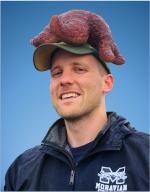
Joshua Lord | Associate Professor, Director of the Environmental Studies and Sciences Program
Office location: PPHAC 218
Lab location: Collier 317
Office phone: 610-861-1414
Email: lordj02@moravian.edu
Education
B.A. in Biology, Colby College
M.S. in Marine Biology, University of Oregon
Ph.D. in Oceanography, University of Connecticut
Research Interests
I teach courses related to marine biology and invertebrate ecology, including Animal Behavior, Marine Ecology, and a variety of others. My research focuses on understanding how invasive species and changing environmental conditions can affect predation and competition between species. Along with the students in my lab, I work with a variety of marine species (especially crabs, snails, and biofouling organisms) and test their responses to climate change and resistance to predation.
Joshua Lord's Selected Publications
Rappaport SD, Lord JP (2021) Linear dominance hierarchies in female grass shrimp Palaemon pugio. The Biological Bulletin 241(1).
Lord JP (2021) Using a game to teach invasive species spread and management. Journal of College Science Teaching. Accepted, in press.
Lord JP (2021) Size affects intraspecific aggression and response to predation threat in juvenile lobsters. Marine Biology: 168:51.
Lord JP, Moser RM, Buonocore EM, Sylvester EE, Morales MJ, Granitz AP, Disipio A, Blakely E, O’Sullivan-Evangelista SL, Mateo TF, Chlebove GJ, Carey CM, Lucas O (2021) Dominance hierarchies in marine invertebrates. The Biological Bulletin 240(1):1-13.
Lord JP, Rappaport SD (2021) Snail morphological and behavioral predator avoidance strategies vary by site. American Conchologist 49(1).
Froehlich, Kyle R, Lord JP (2020) "Can ocean acidification interfere with the ability of mud snails (Tritia obsoleta) to sense predators?" Journal of Experimental Marine Biology and Ecology 526: 151355.
Boch CA, DeVogelaere A, Burton E, King C, Lord JP, Lovera C, Litvin S, Kuhnz L, Barry JP (2019) "Coral translocation as a method to restore impacted deep-sea coral communities." Frontiers in Marine Science 6:540.
Lord JP, Harper EM, Barry JP (2019) Ocean acidification may alter predator-prey relationships and weaken nonlethal species interactions. Marine Ecology Progress Series 616: 83-94.
Barry JP, Graves D, Kecy C, Lovera C, Boch CA, Lord JP (2018) Chasing the future: how will ocean changes affect marine life? Oceanography 30: 62-73.
Lord JP, Barry JP, Graves D (2017 "Impact of climate change on direct and indirect species interactions." Marine Ecology Progress Series 571: 1-11 (Feature Article).
Lord JP, Barry JP (2017) "Juvenile mussel and abalone predation by the lined shore crab Pachygrapsus crassipes." Journal of Shellfish Research 36: 209–213.
Lord JP (2017) "Potential impact of Asian shore crab Hemigrapsus sanguineus on native northeast Pacific crabs." Biological Invasions 19: 1879-1887.
Lord JP, Williams LR (2017) "Increase in density of genetically diverse invasive Asian shore crab (Hemigrapsus sanguineus) populations in the Gulf of Maine." Biological Invasions 19: 1153–1168.
Lord JP (2017) "Impact of seawater temperature on growth and recruitment of invasive fouling species at the global scale." Marine Ecology 38: e12404.
Lord JP (2017) "Temperature, space availability, and species assemblages impact competition in global fouling communities." Biological Invasions 19: 43–55.
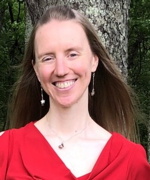
Sara McClelland | Assistant Professor
Office location: Collier 312
Lab location: Collier 320
Office phone: 610-861-1427
Email: mcclellands@moravian.edu
Education
B.S. in Biology, Wheeling Jesuit University
M.S. in Marine Biology, University of North Carolina Wilmington
Ph.D. in Biological Sciences, Duquesne University
Research Interests
I am interested in understanding how human-induced environmental changes affect vertebrate physiology. My current research focuses on the impacts of ecologically relevant concentrations of pesticides on neurodevelopment, behavior, and body morphology using an amphibian model. Over 1 billion pounds of pesticides are used annually to control pests within the US. Unfortunately, these pesticides often contaminate natural habitats and can negatively impact non-target organisms. In addition to my interest in environmental toxins, I also investigate the role of the stress hormone corticosterone in neurological and morphological changes due to increased stress during development.
Sara McClelland's Selected Publications
McClelland SJ and Woodley SK. 2020. "Water-borne corticosterone assay is a valid method in some but not all life-history stages in Northern Leopard Frogs." General and Comparative Endocrinology. In review.
Siegel D, Murray C, Pereira K, McClelland SJ, Wren S, Waltz T, Long CL. 2020. "Re-examining the Heads of Eurycea bislineata." Copeia. In press.
Durbin MR, Pelcher LR, McClelland SJ, and Woodley SK. 2020. "Effects of early ethanol exposure on Lithobates pipiens tadpole development." Journal of Young Investigators. In press.
McClelland SJ, Bendis RJ, Relyea RA, Woodley SK. 2018. "Insecticide-induced changes in amphibian brains: How sublethal concentrations of chlorpyrifos directly affect neurodevelopment." Environmental Toxicology and Chemistry 37(10):2692-2698.
McClelland SJ, Gay M, Pabst DA, Dillaman R, Westgate AJ, and Koopman HN. 2012. "Microvascular patterns in the blubber of shallow and deep diving Odontocetes." Journal of Morphology 273(8):932-942.
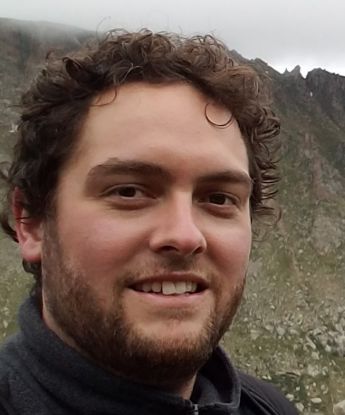
Daniel Proud | Assistant Professor
Office location: Collier 323
Lab location: Collier 322
Office phone: 610-625-7114
Email: proudd@moravian.edu
Website: https://danielproudlab.com
Education
B.A. in Mathematics, B.S. in Biology, Virginia Wesleyan College
Ph.D. in Environmental & Evolutionary Biology, University of Louisiana at Lafayette
Research Interests
The primary focus of work in my lab is to address fundamental questions related to the origin and maintenance of biodiversity and distribution of species, especially arachnids, using an integrative approach. One particular group of interest in my lab is the arachnid order Opiliones (harvestmen). Given their ancient origins and limited dispersal abilities, harvestmen provide an ideal, non-model system to study fundamental concepts in evolutionary biology and biogeography. Ongoing projects include studies of arachnid diversity and systematics, Caribbean island biogeography, Gondwanan biogeography, population genetics, evolutionary ecology, and functional morphology.
Daniel Proud's Selected Publications
Kury, A.A., A. Pérez-González, and D.N. Proud. 2019. "A new Indo-Malayan family of Grassatores (Arachnida, Opiliones, Laniatores)" Invertebrate Systematics 33(6): 892-906.
Proud, D.N. and V.R. Townsend Jr. 2019. "Unusual penis morphology among cosmetid harvestmen (Arachnida: Opiliones) from Mesoamerica." Zoomorphology 138(2): 233-247.
Townsend, V.R. Jr., A. Pérez-González, and D.N. Proud. 2019. "Putative mating plugs of harvestmen (Opiliones, Laniatores)." Zoologischer Anzeiger 278:101-109.
D.N. Proud, M.B. DaSilva, and M.E. Bichuette. 2018. "Light from dark: a relictual troglobite reveals a broader ancestral distribution for kimulid harvestmen (Opiliones: Laniatores: Kimulidae) in South America." PLOS ONE 12(11): e0187919.
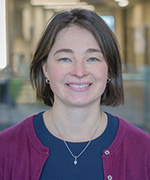
Anastasia Thévenin | Associate Professor
Office location: Collier 316
Lab location: Sally 317
Office phone: 610-861-1607
Email: thevenina@moravian.edu
Education
B.S. in Biomedical Science, Lynchburg College
Ph.D. in Chemistry and Biochemistry, University of Delaware
Research Interests
I am interested in understanding how phosphorylation of Gap Junction (GJ) protein, Connexin 43 (Cx43), affects its function. GJs are pores found in plasma membranes of two neighboring cells and are made up of 12 Cx43 molecules. These pores are the only means cells have for direct cell-cell communication, allowing small molecules and ions to move from cell to cell. Cell-cell communication is key for many cellular functions, such as development, proliferation, and differentiation. Current projects are focused on using phosphomimetic mutants of Cx43 to study their ability to interact with other protein partners and to affect GJ function.
Anastasia Thévenin's Selected Publications
Janessa Gerhart, Anastasia F. Thévenin, Kelly King and Damian Thévenin. “Inhibiting EGFR Dimerization and Signaling Through Targeted Delivery of a Juxtamembrane Domain Peptide Mimic” ACS Chemical Biology 13 (9):2623-2632, 2018.
Anastasia F. Thévenin, Rachel Margraf, Rachael Andrews, Charles Fisher and Matthias M. Falk. “Phosphorylation regulates connexin/ZO-1 binding and release, an important step in gap junction turnover” Mol Biol Cell 28 (25):3595-3608, 2017.
Catherine Chen*, Byung H. Ha*,Anastasia F. Thévenin, Hua J. Lou, Rong Zhang, Kevin Y. Yip, Jeffrey R. Peterson, Mark Gerstein, Philip M. Kim, Stefan Knapp, Titus J. Boggon, and Benjamin E. Turk. "Identification of a major determinant for serine-threonine kinase phosphoacceptor specificity." Molecular Cell 53(1):140-7, 2014.
* equal author contribution
Anastasia F. Thévenin, Tia J. Kowal, John T. Fong, Rachael M. Kells, Charles G. Fisher, and Matthias M. Falk. "Proteins and Mechanisms Regulating Gap Junction Assembly, Internalization and Degradation." Physiology 28: 93-116, 2013.
Anastasia F. Thévenin, Chati L. Zony&, Brian J. Bahnson and Roberta F. Colman. "Activation by phosphorylation and purification of human c-Jun N-terminal kinase (JNK) isoforms in milligram amounts." Protein Expr Purif 75 :138-146, 2011.
& undergraduate student
Anastasia F. Thévenin, Chati L. Zony&, Brian J. Bahnson and Roberta F. Colman. "Requirements for complex formation between c-Jun N-terminal kinase and Glutathione S-Transferase in vitro." Protein Science 20: 834-848, 2011.
& undergraduate student
Anastasia F. Thévenin*, Elizabeth S. Monillas*, Jason M. Winget, Kirk Czymmek and Brian J. Bahnson. "Trafficking of Platelet-activating Factor Acetylhydrolase type-II in response to oxidative stress." Biochemistry 50:8417-8426, 2011.
* equal author contribution

Natasha Woods | Assistant Professor
Office location: Collier 318
Office phone: 610-625-7603
Email: woodsn02@moravian.edu
Education
B.S. in Biology, Jacksonville State University
M.S. in Biology, Jacksonville State University
Ph.D. in Evolution, Ecology and Organismal Biology, The Ohio State University
Research Interests
My research answers questions regarding how plant communities are affected by anthropogenic and climate induced disturbances and the potential for reassembly following disturbance. I am interested in mechanisms driving patterns of early stage plant recruitment in natural and disturbed environments. My research interests broadly include plant facilitation and competition, seed dispersal and germination, woody plant encroachment, and stability of coastal dune vegetation.
Natasha Woods' Selected Publications
N.N. Woods, Kirschner, A. and Zinnert, J.C. 2023. "Intraspecific competition in common coastal dune grasses overshadows facilitation on the dune face." Restoration Ecology e13870
N.N. Woods, Leggett, Z.H., and Miriti, M.N. 2023. "The intersections of identity and persistence for retention in ecology and environmental biology with personal narratives from Black women." Journal of Geoscience Education. https://doi.org/10.1080/10899995.2022.2154935
N.N. Woods, P.A. Tuley, and J.C. Zinnert. 2021. "Long-term community dynamics reveal different trajectories for two mid-Atlantic forests." Forests 12:1063.
N.N. Woods, J.L. Swall, and J.C. Zinnert. 2020. "Soil salinity impacts future community composition of coastal forests." Wetlands 40:1495–1503.
M.N. Sinclair, N.N. Woods and J.C. Zinnert. 2020. "Facilitative and competitive tradeoffs between Morella cerifera seedlings and coastal grasses." Ecosphere 11:e02995.
N.N. Woods, B.L. Dows, E.B. Goldstein, L.J. Moore, D.R. Young, and J.C. Zinnert. 2019. “Interaction of seed dispersal and environmental filtering affects woody encroachment patterns in coastal grassland” Ecosphere 10:e02818.
N.N. Woods, L. McCarthy, and M.N. Miriti. 2019. “Nonhierarchical competition among co-occurring woody seedlings in facilitated sites” Ecosphere 10:e02751.
N.N. Woods and M.N. Miriti. 2016. “Ubiquitous germination among common perennial species in response to facilitated and unfacilitated microsites” Journal of Arid Environments 124:72-79.
Support Staff
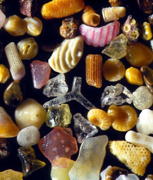
Madison Trautman | Laboratory Coordinator
Office location: Collier 314
Office phone: 610-861-1674
Email: biolabcoordinator@moravian.edu or trautmanm@moravian.edu
Education
B.S. in Biological Sciences, Messiah University
Former Department Members
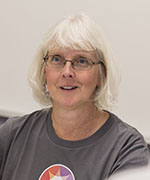
Diane White Husic | Former Dean of the Center for Scholarship, Research, and Creative Endeavors and Professor of Biology
Office location: 202 Hamilton Hall
Office phone: 610-625-7100
Email: husicd@moravian.edu
Website: https://husicd.myportfolio.com
Education
B.S. in Biochemistry, Northern Michigan University
Ph.D. in Biochemistry, Michigan State University
Research Interests
I am trained as a biochemist but have taught a wide range of courses in environmental science, conservation biology, nutrition, biochemistry, sustainability, tropical ecosystems, and climate change. My research focuses on the restoration of a contaminated site (the Palmerton Superfund site) and the impact of climate change on the Appalachian landscape. I am also interested in communicating environmental issues to the public, engaging the public in citizen science, and the development of policy to address climate change at the local to international levels. I routinely attend the international meetings as a credentialed observer for the U.N. Framework Convention on Climate Change and serve as a member of the steering committee for the Research and Independent NGOs constituency group.
Diane Husic's Selected Publications
Husic, D.W., Husic, H.D., Kunkle, D., and Whidden, H., editors. From Superfund Site to Wildlife Refuge and Environmental Education Center: A Story of Ecological Restoration at the Lehigh Gap, Pennsylvania. Pennsylvania Academic of Sciences, by invitation (in preparation, expected publication date December 2021).
Halliwell, P., Whipple, S., Hassell, K., Bowser, G., Husic, D. and Brown, M.A. (2020) "21st Century Climate Education: Developing Diverse, Confident, and Competent Leaders in Environmental Sustainability." The Bulletin of the Ecological Society of America 101(2).
Husic, D.W. (2016) "Climate Negotiations on an International Stage: A Report from Marrakech." Wildlife Activist 80: 11-12.
Husic, D.W., Peterman, K.E., Foy, G.P., and Binford, H. (2014) "Undergraduates, Faculty Mentors, and Professional Disciplinary Societies Address Climate Change as a Global Human Rights Issue." CUR Quarterly 34 (3): 19–20.
Husic, D.W. (2014) "What Fires Should Educators Light?" Liberal Education 100 (1). Husic, D. (2013) "On the Value of Raptors" American Hawkwatcher 38: 16–19.
Husic, D. (2012) "Environmental Literacy, Wild Places and Play as Elements of a Quality Education." Wildlife Activist 71: 6–7.
Husic, D.W. (2011) "Climate Change is Not a Spectator Sport: Make a Difference Globally and in Your Backyard." Keystone Wild! Notes, Spring edition, pp. 15–18, by invitation.
Husic, D.W., Husic, C., Kunkle, D., and Kuserk, F. (2010) Lehigh Gap Wildlife Refuge Ecological Assessment Part II.
Husic, D.W., and Hensel, N. (2011) "From Transforming the Curriculum to Tackling Global Grand Challenges — The Role of Undergraduate Research in the 21st Century." PKAL 20th Anniversary Essays, by invitation.
Elrod, S., Husic, D. and Kinzie, J (2010) "Research and Discovery Across the Curriculum," Peer Review 12: 4–8.
Husic, D. and Kunkle, D. (2010) "From Superfund to Super Habitat: Lehigh Gap Nature Center." Keystone Wild! Notes, Spring 2010, PA Wild Resource Conservation Program.
Husic, D.W. (2010) "The Role of Department Chairs in Promoting and Supporting Transformative Research." In Transformative Research at Predominantly Undergraduate Institutions, Karukstis, K. and Hensel, N. eds., Council on Undergraduate Research, Washington, D.C.
Husic, D.W. (2010) "Transformative Research as a Means of Transforming Landscapes and Revitalizing Academic Departments: A Case Study." In Transformative Research at Predominantly Undergraduate Institutions, Karukstis, K. and Hensel, N. eds., Council on Undergraduate Research, Washington, D.C.
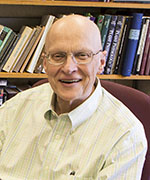
John Bevington | Professor
Education
A.B. in Botany and Chemistry, Indiana State University
M.S. in Plant Physiology, Purdue University
Ph.D. in Plant Physiology, Purdue University
Research Interests
Plant Physiology
John Bevington's Selected Publications
Latteman, T.A., J.E. Mead, M.A. DuVall, C.C. Bunting, and J.M. Bevington. 2014. "Differences in anti-herbivore defenses in non-myrmecophyte and myrmecophyte Cecropia trees." Biotropica 46 (6): 652–656.
Huynh, A.V. and J.M. Bevington. 2014. "MALDI-TOF MS analysis of proanthocyanidins in two lowland tropical forest species of Cecropia: A first look at their chemical structures." Molecules 19: 14484–14495. doi: 10.3390/moleculesl90914484.
Bevington, J.M. 2013. "Anti-herbivore defenses in non-myrmecophyte Cecropia." Invited presentation at a Gordon Research Conference. Plant-Herbivore Interaction: The changing face of plant-herbivore studies. Ventura, California.
Hance, B.A. and J.M. Bevington. 1992. "Changes in protein synthesis during stratification and dormancy release in embryos of sugar maple (Acer saccharum)." Physiologia Plantarum 86: 365–371.
Bevington, J.M. and M.C. Hoyle 1981. "Phytochrome action during prechilling induced germination of Betula papyrifera Marsh." Plant Physiology 67:705–710.
Downs, R.J. and J.M. Bevington. 1981. "Effect of temperature and photoperiod on growth and dormancy of Betula papyrifera." Amer. J. Bot. 68:795–800.
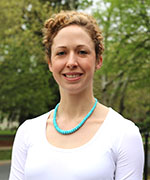
Hilary Christensen | Visiting Assistant Professor
Education
B.A. in Biology, Carleton College
Ph.D. in Geophysical Sciences, University of Chicago
Research Interests
I am a vertebrate paleontologist with broad interests in mammalian evolution and dietary strategies through time. My research focused on the timing and nature of the mammalian transition to herbivory after the KT extinction and evaluating dietary niche partitioning in early Eocene mammalian faunas using stable isotope analysis.
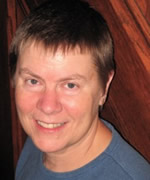
Frances Irish | Emeritus Associate Professor of Biology
Education
A.B. in Biology, Oberlin College
A.M. in Organismic and Evolutionary Biology, Harvard University
Ph.D. in Organismic and Evolutionary Biology, Harvard University
Research Interests
My research applied comparative and experimental approaches to the problem of how complex structural systems behave, focusing on the feeding apparatus of snakes and fish.
Frances Irish's Selected Publications
Professor Irish retired in 2020, and passed away in September of 2024 after fighting Parkinson's disease for over 10 years and clear cell renal cell carcinoma for almost 6 years. She was a wonderful colleague, dedicated mentor and educator, and a devoted scholar, and her passing has saddened all who had the good fortune to know her.
Cundall, D. and F. Irish. 2022. "Macrostomy, macrophagy, and snake phylogeny pp. 437-454. In: D. J. Gower and H. Zaher (eds.) The Origin and Early Evolution of Snakes, Systematics Soc. Spec. Vol. 90. Cambridge University Press, London.
Burbrink, F. T., F. G. Grazziotin, R. A. Pyron, D. Cundall, S. Donnellan, F. Irish, J. S. Keogh, F. Kraus, R. W. Murphy, B. Noonan, C. J. Raxworthy, S. Ruane, A. R. Lemmon, E. M. Lemmon, and H. Zaher. 2020. "Interrogating genomic-scale data for Squamata (lizards, snakes, and amphisbaenians) shows no support for key traditional morphological relationships." Syst. Biol. 69, 502-520.
Kolmann, M., K. Cohen, K. Bemis, A. Summers, F. Irish, and L.P. Hernandez. 2019. "Tooth and consequences: heterodonty and dental replacement in piranhas and pacus (Serrasalmidae)." Evolution & Development. 21(5): 247-262.
Cundall, D., E. Fernandez, and F. Irish. 2017. "The suction mechanism of the pipid frog, Pipa pipa (Linnaeus, 1758)." Journal of Morphology. 278:1229-1240.
Fernandez, E., F. Irish, and D. Cundall. 2017. "How a frog, Pipa pipa, succeeds or fails in catching fish." Copeia 105.1 (2017): 108-119.
Cundall, D. and F.J. Irish. 2008. "The Snake Skull." pp. 349–692. In: Biology of the Reptilia, vol. 20. Society for the Study of Amphibians and Reptiles.
F.J. Irish 1989. "The role of heterochrony in the origin of a novel Bauplan: Evolution of the ophidian skull." Geobios 12: 227–233.
Cundall, D. and F. J. Irish. 1989. "The function of the intramaxillary joint in the Round Island boa, Casarea dussumieri." J. Zool., Lond. 217, 569-598.
F. J. Irish, E. E. Williams, and E. Seling. 1988. "Scanning electron microscopy of changes in epidermal structure occurring during the shedding cycle in squamate reptiles." Journal of Morphology 197, 105-126.
Cundall, D. and F. Irish. 1986. "Aspects of locomotor and feeding behavior in the Round Island boa, Casarea dussumieri." The Dodo, J. Jersey Wildlife Preservation Trust 23, 108-111.
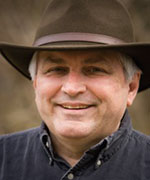
Frank Kuserk | Emeritus Professor of Biology and Director, Environmental Studies & Sciences Program
Education
B.S. in Biology, University of Notre Dame
Ph.D. in Ecology and Organismal Biology, University of Delaware
Research Interests
Microbial ecology, evolution, and animal behavior.
Frank Kuserk's Selected Publications
Professor Kuserk passed away in October of 2017. He was an exemplar of the teacher-scholar and is deeply missed by his students, his colleagues, and the wider Moravian community.
Simmons, J.A., M. Anderson, W. Dress, C. Hanna, D.J. Hornbach, A. Janmaat, F. Kuserk, J.G. March, T. Murray, J. Niedzwiecki, D. Panvini, B. Pohlad, C. Thomas, and L. Vasseur. 2014. "A Comparison of the Temperature Regime of Short Stream Segments Under Forested and Non-Forested Riparian Zones at Eleven Sites Across North America." River Research and Applications. DOI: 10.1002/rra.2796
Husic, D.W., C. Husic, D. Kunkle, and F. Kuserk. 2010. Lehigh Gap Wildlife Refuge Ecological Assessment Part II.
Scholtes, C., and F. Kuserk. 2006. "Isolation and Identification of Proteolytic Bacteria From Leaves of the Northern Pitcher Plant, Sarracenia purpurea." Journal of the Pennsylvania Academy of Science. 80(1): 24.

